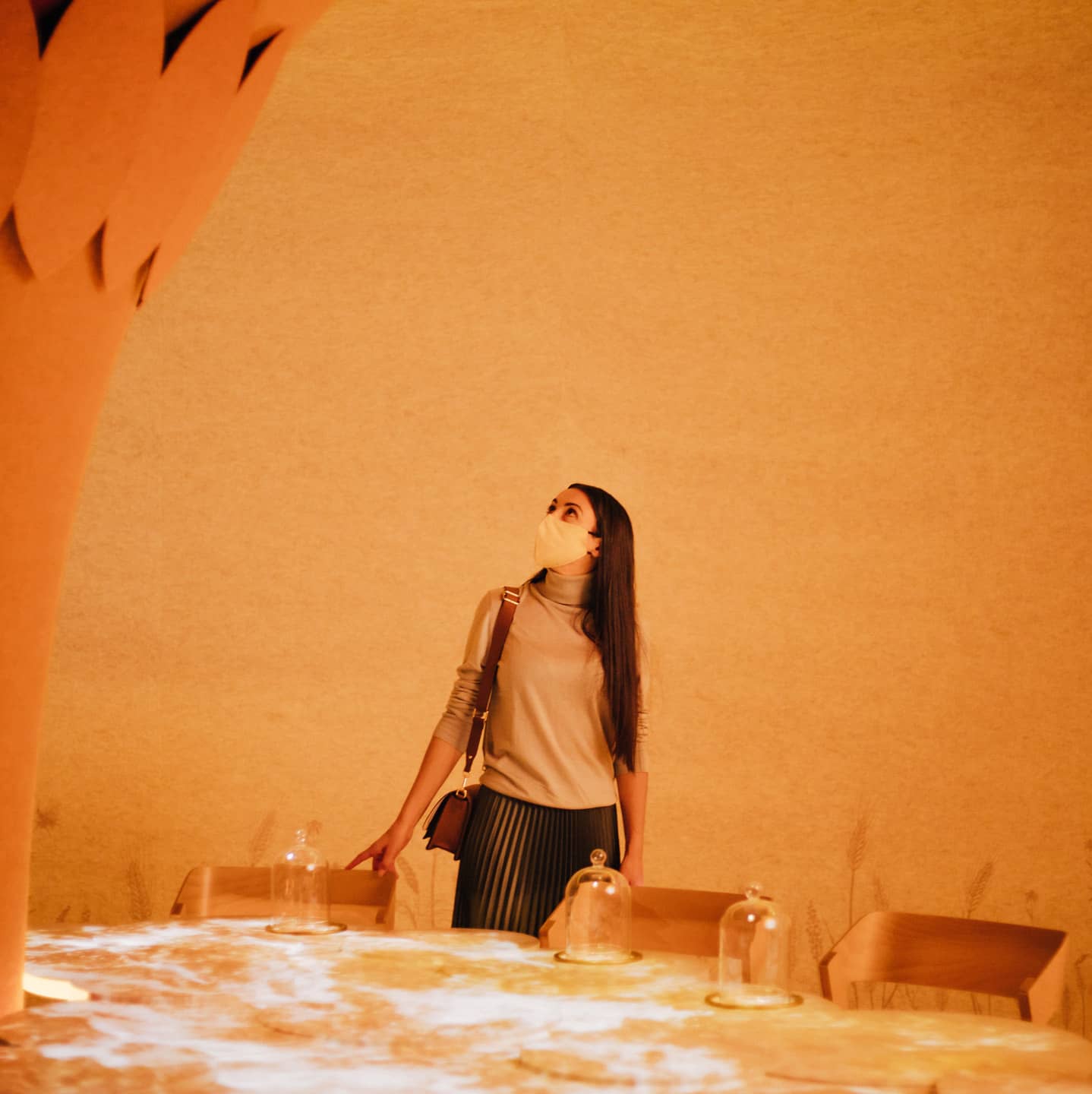- News
- The Underrated Art of Sketch Notes
The Underrated Art of Sketch Notes
December 5, 2020
Written by Alvin Oei
with help from Richard Procter
BRC is a story driven agency, which means that our experiences come to life through narrative. These narratives are the DNA of our projects. Long before we get into renders or place making, we create a number of loose sketches to explore story beats and abstract ideas from team discussions. These sketches help communicate story ideas and are often as simple as stick figures drawn on post-its.
This process is particularly effective in the early stages of a Charrette when team members and clients are throwing around hundreds of ideas. One option is to type up all the notes, but I prefer to doodle the conversation so that people can form immediate visual connections. As somebody who loves to sketch and bring discussions to life with visuals, it’s been fun to integrate this process into BRC’s work flow.
To unpack this process a bit, I asked our senior writer, Rich Procter to create a sample narrative for a fictional Black Lives Matter Museum to demonstrate how sketching might be used in the early phases. While this blog is focused on sketching, the subject matter I chose to highlight is a topic that everybody, including myself, should spend more time understanding. This was an opportunity to do that.
SKETCH NOTES
I usually start with “Sketch Notes” to capture an overview of a project. The notes are done on a letter sized page that illustrate different points as simple ideas and footnotes for further research. I almost always use a Black Faber-Castell Polychromos pencil to do these just because of how good it feels on paper. Typically, these are done quickly as people are talking to capture the energy of the room.
For this example, I’ve highlighted key points from Rich’s narrative. They’re not usually colored but thought it would be fun to add a bit here.
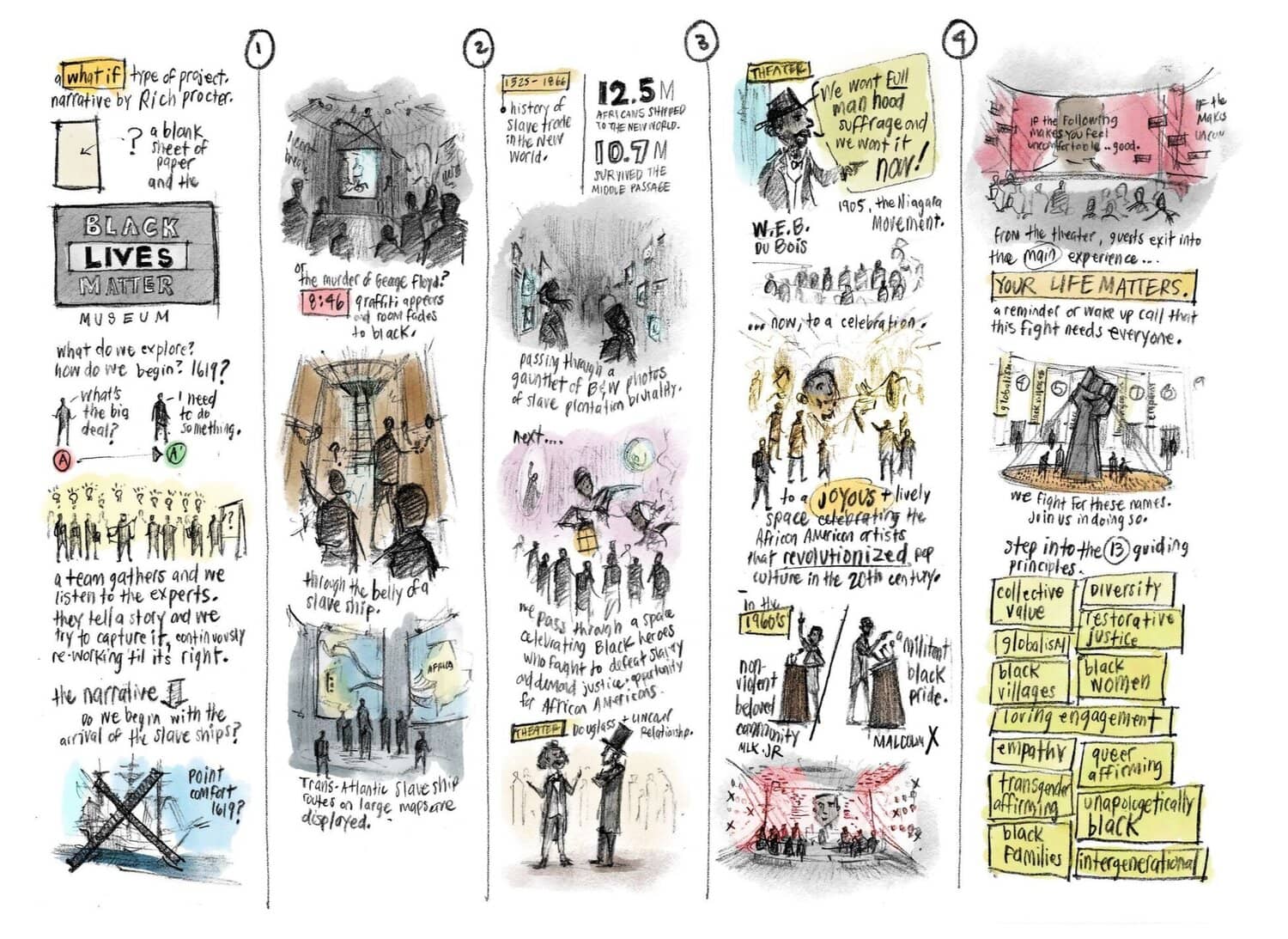
TYING IN NARRATIVE
After a month or so, the narrative arrives. The narrative is the result of many team discussions, community feedback, and research. How might we begin to extract key moments and imagine unexpected ways they can come to life for a guest? A sentence such as “we enter a vivid room full of large maps” can be interpreted hundreds of ways by different minds. Quick sketches unify these collective ideas, introduce new questions, and explore the different storytelling mechanisms that can inspire a transformation within guests.
Below, you’ll find how each paragraph of Rich’s sample narrative might be explored through sketching and ideation as a first pass. The story beats below are divided into sections and illustrate what each space, whether a media moment or gallery, is supposed to be from a general sense. The way to begin thinking about these story beats is by focusing on a few key moments in addition to keeping a big picture view of the experience is meant to communicate. Most importantly, you’ll notice that people help bring sketches to life. Beyond a sense of scale, people help provide context and highlight the emotional impact of a space.

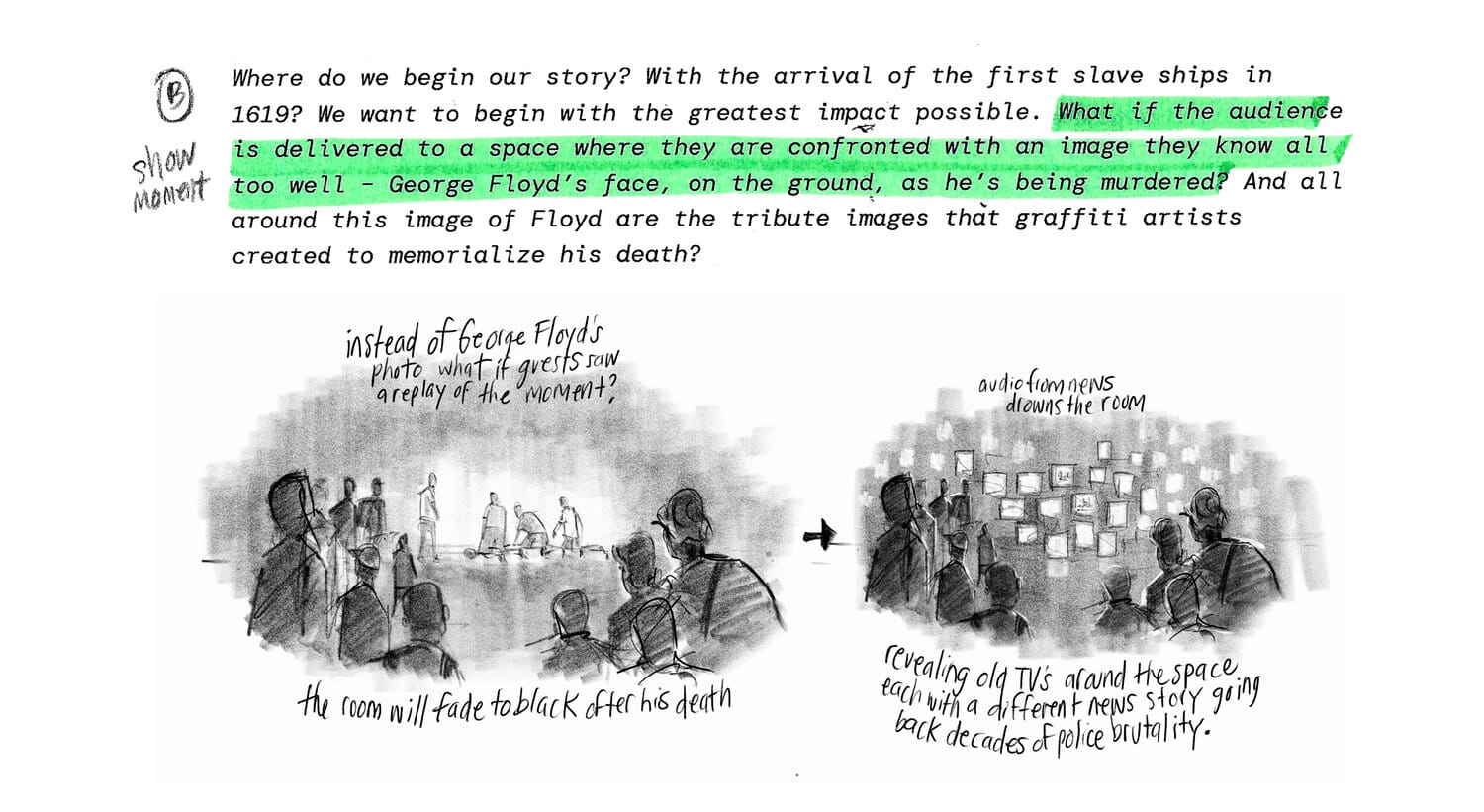

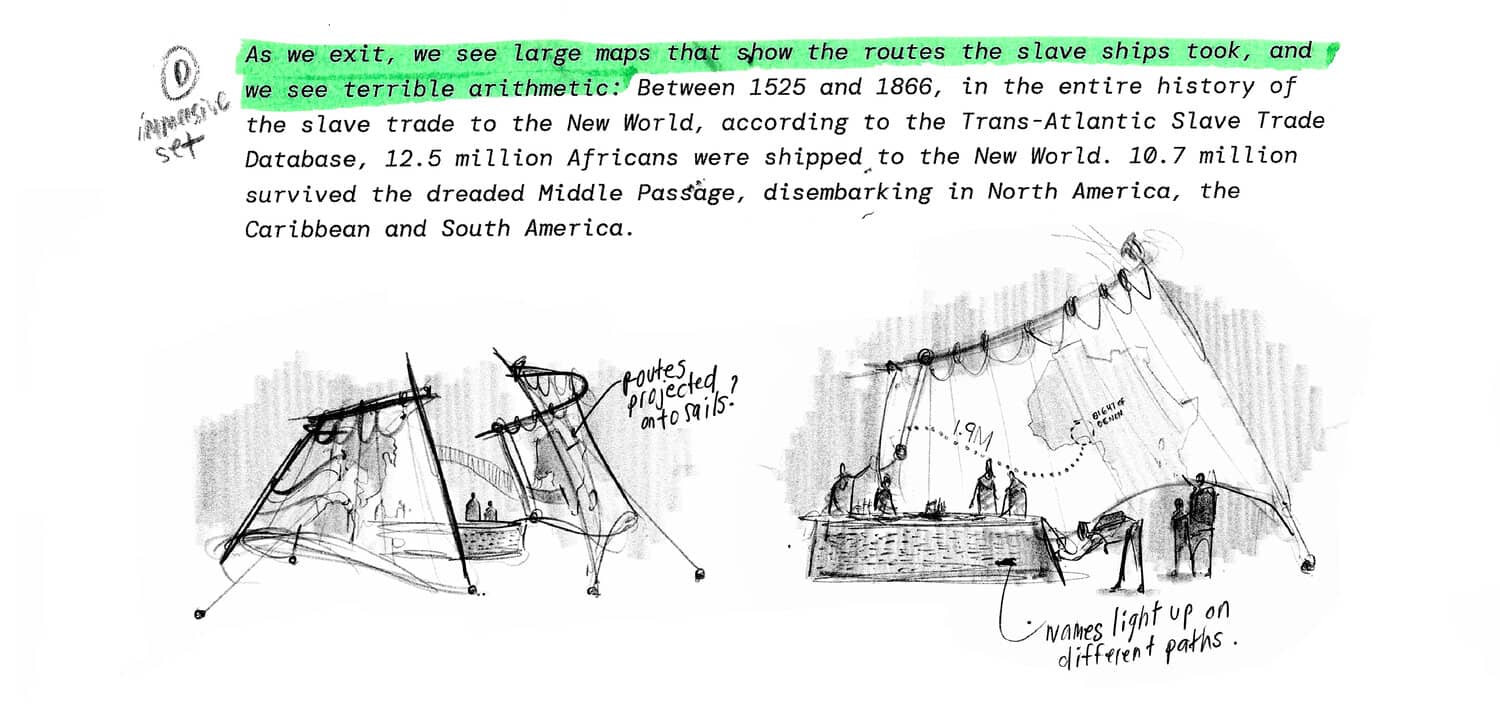

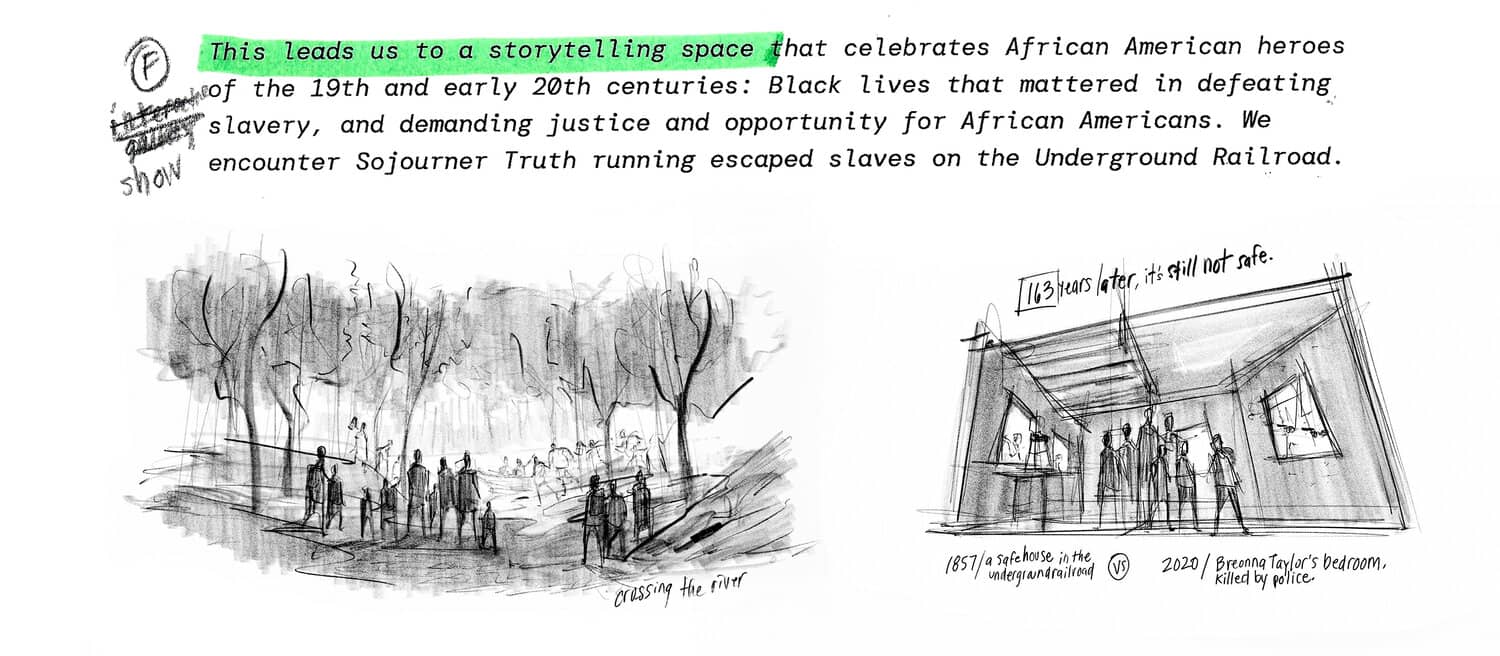

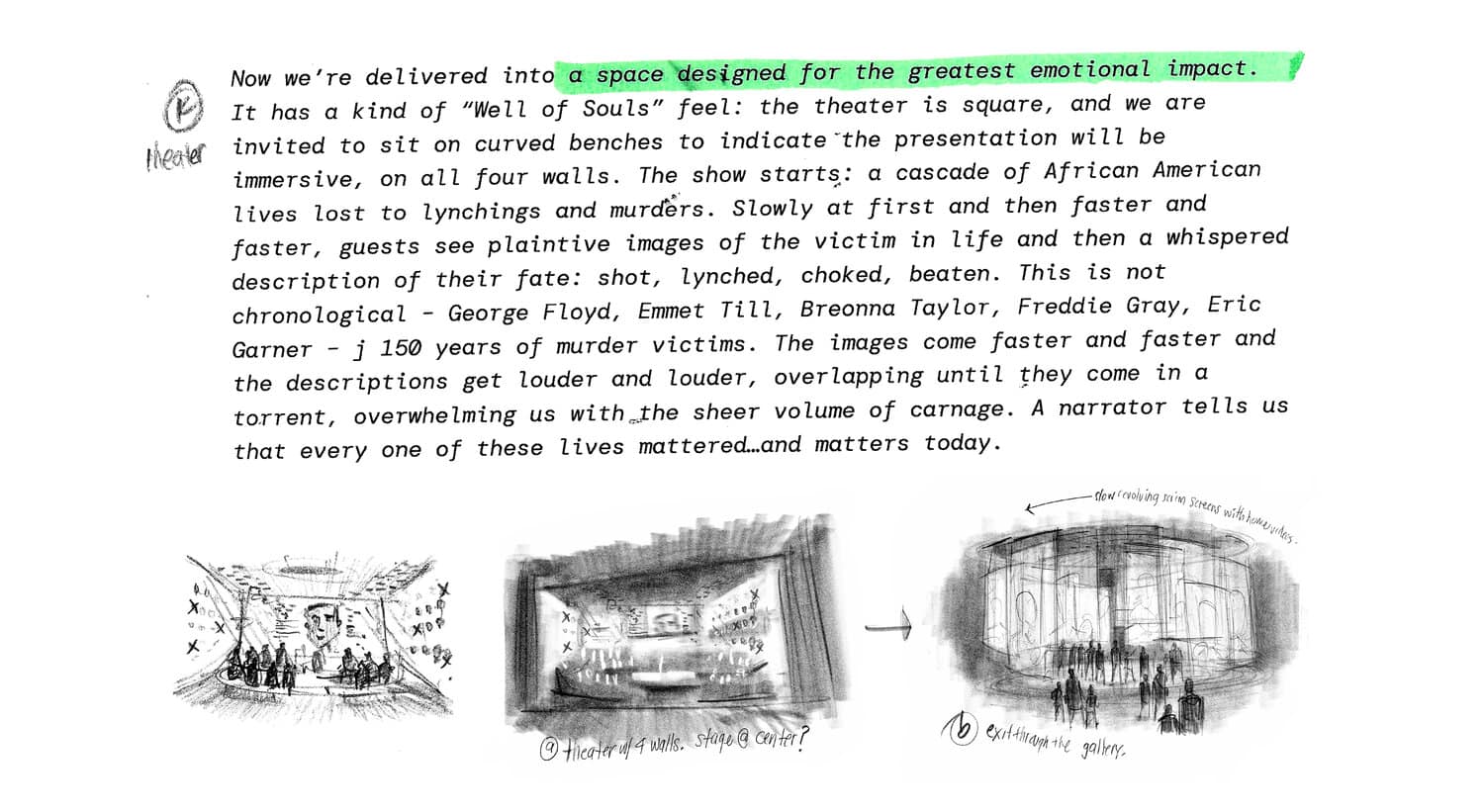
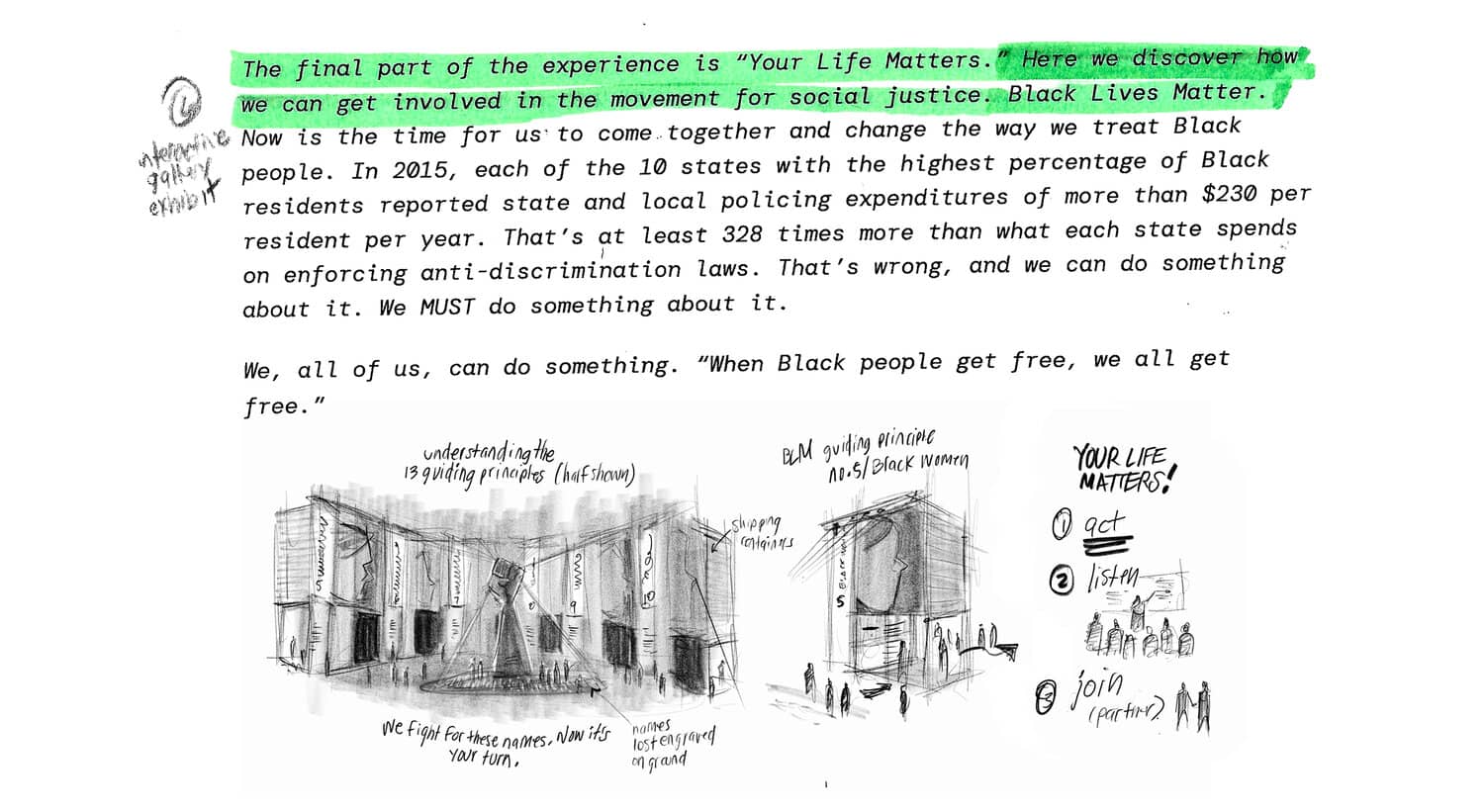
Anyone can sketch and the best way to start is just to jump in. Remember that it’s less about creating a pretty picture – unless that’s what you want to do – and more about capturing an idea for conversation. A good starter challenge might be to open up a TED Talk or a page from your favorite book and begin to imagine the words as visuals. Start with stick figures, anything, just get something onto that blank sheet of paper. These techniques will help sharpen your ability to take in and interpret information through a creative lens.
